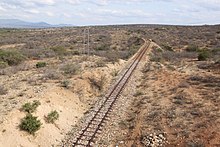Usambara Railway
| Tanga-Arusha | |||||||||||||||||||||||||||||||||||||||||||||||||||||||||||||||||||||||||||||||||||||||||||||||||||||||||||||||||||||||||||||||||||||||||||||||||||||||||||||||||||||||||||||||||||||||||||||||||||||||||||||||||||||||||||||||||||||||||||||||||||||
|---|---|---|---|---|---|---|---|---|---|---|---|---|---|---|---|---|---|---|---|---|---|---|---|---|---|---|---|---|---|---|---|---|---|---|---|---|---|---|---|---|---|---|---|---|---|---|---|---|---|---|---|---|---|---|---|---|---|---|---|---|---|---|---|---|---|---|---|---|---|---|---|---|---|---|---|---|---|---|---|---|---|---|---|---|---|---|---|---|---|---|---|---|---|---|---|---|---|---|---|---|---|---|---|---|---|---|---|---|---|---|---|---|---|---|---|---|---|---|---|---|---|---|---|---|---|---|---|---|---|---|---|---|---|---|---|---|---|---|---|---|---|---|---|---|---|---|---|---|---|---|---|---|---|---|---|---|---|---|---|---|---|---|---|---|---|---|---|---|---|---|---|---|---|---|---|---|---|---|---|---|---|---|---|---|---|---|---|---|---|---|---|---|---|---|---|---|---|---|---|---|---|---|---|---|---|---|---|---|---|---|---|---|---|---|---|---|---|---|---|---|---|---|---|---|---|---|---|---|---|---|---|---|---|---|---|---|---|---|---|---|---|---|---|---|---|
| Geographical data | |||||||||||||||||||||||||||||||||||||||||||||||||||||||||||||||||||||||||||||||||||||||||||||||||||||||||||||||||||||||||||||||||||||||||||||||||||||||||||||||||||||||||||||||||||||||||||||||||||||||||||||||||||||||||||||||||||||||||||||||||||||
| continent | Africa | ||||||||||||||||||||||||||||||||||||||||||||||||||||||||||||||||||||||||||||||||||||||||||||||||||||||||||||||||||||||||||||||||||||||||||||||||||||||||||||||||||||||||||||||||||||||||||||||||||||||||||||||||||||||||||||||||||||||||||||||||||||
| Country : | Tanzania | ||||||||||||||||||||||||||||||||||||||||||||||||||||||||||||||||||||||||||||||||||||||||||||||||||||||||||||||||||||||||||||||||||||||||||||||||||||||||||||||||||||||||||||||||||||||||||||||||||||||||||||||||||||||||||||||||||||||||||||||||||||
| Route data | |||||||||||||||||||||||||||||||||||||||||||||||||||||||||||||||||||||||||||||||||||||||||||||||||||||||||||||||||||||||||||||||||||||||||||||||||||||||||||||||||||||||||||||||||||||||||||||||||||||||||||||||||||||||||||||||||||||||||||||||||||||
| Route length: | 350.5 + 86.1 km | ||||||||||||||||||||||||||||||||||||||||||||||||||||||||||||||||||||||||||||||||||||||||||||||||||||||||||||||||||||||||||||||||||||||||||||||||||||||||||||||||||||||||||||||||||||||||||||||||||||||||||||||||||||||||||||||||||||||||||||||||||||
| Gauge : | 1000 mm ( meter gauge ) | ||||||||||||||||||||||||||||||||||||||||||||||||||||||||||||||||||||||||||||||||||||||||||||||||||||||||||||||||||||||||||||||||||||||||||||||||||||||||||||||||||||||||||||||||||||||||||||||||||||||||||||||||||||||||||||||||||||||||||||||||||||
| Maximum slope : | 25 ‰ | ||||||||||||||||||||||||||||||||||||||||||||||||||||||||||||||||||||||||||||||||||||||||||||||||||||||||||||||||||||||||||||||||||||||||||||||||||||||||||||||||||||||||||||||||||||||||||||||||||||||||||||||||||||||||||||||||||||||||||||||||||||
| Minimum radius : | 150 m | ||||||||||||||||||||||||||||||||||||||||||||||||||||||||||||||||||||||||||||||||||||||||||||||||||||||||||||||||||||||||||||||||||||||||||||||||||||||||||||||||||||||||||||||||||||||||||||||||||||||||||||||||||||||||||||||||||||||||||||||||||||
|
|||||||||||||||||||||||||||||||||||||||||||||||||||||||||||||||||||||||||||||||||||||||||||||||||||||||||||||||||||||||||||||||||||||||||||||||||||||||||||||||||||||||||||||||||||||||||||||||||||||||||||||||||||||||||||||||||||||||||||||||||||||
The Usambarabahn was the first German railway in what was then German East Africa and in what is now Tanzania .
history
German East Africa
In 1891 a railway company was founded with the aim of connecting the port of Tanga on the Indian Ocean via the foot of the Usambara Mountains with Lake Victoria . In 1892, construction work on the railway began in Tanga. From June 1893, the line was driven from Tanga. The German shaft master Friedrich Philipp Schleef was mainly responsible for the construction of the railway line . Due to under-capitalization , the company had to be taken over by the state in 1899. The line was then operated by the East African Railway Company , which was founded to build and operate the Tanganyika Railway from Dar es Salaam to Kigoma .
The top of the track reached New Moschi on Kilimanjaro on September 26, 1911 after 351.4 km . The entire line was put into operation on October 4, 1911, the inauguration on February 7, 1912. In 1914 a daily train ran from Tanga to Buiko , two days a week continuously to Neu Moschi and back. The travel time over the entire route was 14 hours 40 minutes. From June 4, 1912 to May 12, 1913, the railway was briefly named Nordbahn . An extension to Aruscha was budgeted for, but the section was initially no longer built due to the First World War .
British mandate
The British Mandate Administration supplemented the Usambara Railway with a connection between Moshi and Voi on the Uganda Railway of the Kenya and Uganda Railways in Kenya and extended it in 1929 to its current terminus in Arusha . Repairs and extensions were carried out with British military railway material.
Tanzania
After Tanzania gained independence, the Central and Usambara Railway was connected with a line from Mruazi to Ruvu . During the time of the East African Union , which included the territory of Kenya, Uganda and Tanzania, the Usambara Railway belonged to the East African Railways (EAR). The community was dissolved in 1977 and continued by the Tanzania Railway Cooperation . This was taken over in 2007 by an Indian investor .
business
At the time of German rule, the railway was operated in 1913 with 18 locomotives, 31 passenger and 199 freight cars by 562 employees (35 of them Europeans). After the construction of the connection to Voi, the traffic between Arusha and Moshi on the one hand and the coast on the other hand to the port of Mombasa was directed, whereby the eastern part of the Usambara Railway was only of local importance. During this time, passenger traffic was handled by four railcars . In the 1990s, passenger traffic was discontinued on this route, and in 2006 goods traffic, which only took place between Tanga and Korogwe and Ruvu. This led to vandalism and the looting of the other facilities. The abandoned station buildings were simply occupied for residential purposes. In June 2018, following an instruction from President Magufuli, the repair of the route began. In October 2018, train traffic between Tanga and Mombo was possible again. On July 20, 2019, Prime Minister Kassim Majaliwa reopened freight traffic between Tanga and Moshi. The first train was an 800t cement train. Cement transport (one train replaces 30 trucks) is cheaper and, given the poor roads, more reliable. The first continuous passenger train from Dar es Salaam to Moshi ran on December 7, 2019. The resumption of traffic to Arusha is scheduled for 2020.
See also
literature
- Franz Baltzer : The colonial railways with a special focus on Africa. Berlin 1916. Reprint, Leipzig 2008, ISBN 978-3-8262-0233-9 , p. 96.
- Neil Robinson: World Rail Atlas and Historical Summary 7 = North, East ans Central Africa . 2009, ISBN 978-954-92184-3-5 , plate 46.
- Helmut Schroeter: The railways of the former German protected areas in Africa and their vehicles (= The vehicles of the German railways . Volume 7). Frankfurt 1961.
Individual evidence
- ^ Alwine Kayser: From the beginnings of our colonies , Verlag Dietrich Reimer, Berlin 1912, page 18
- ↑ ?? (No longer available online.) Archived from the original on April 12, 2016 ; accessed on December 4, 2017 . Info: The archive link was inserted automatically and has not yet been checked. Please check the original and archive link according to the instructions and then remove this notice.


